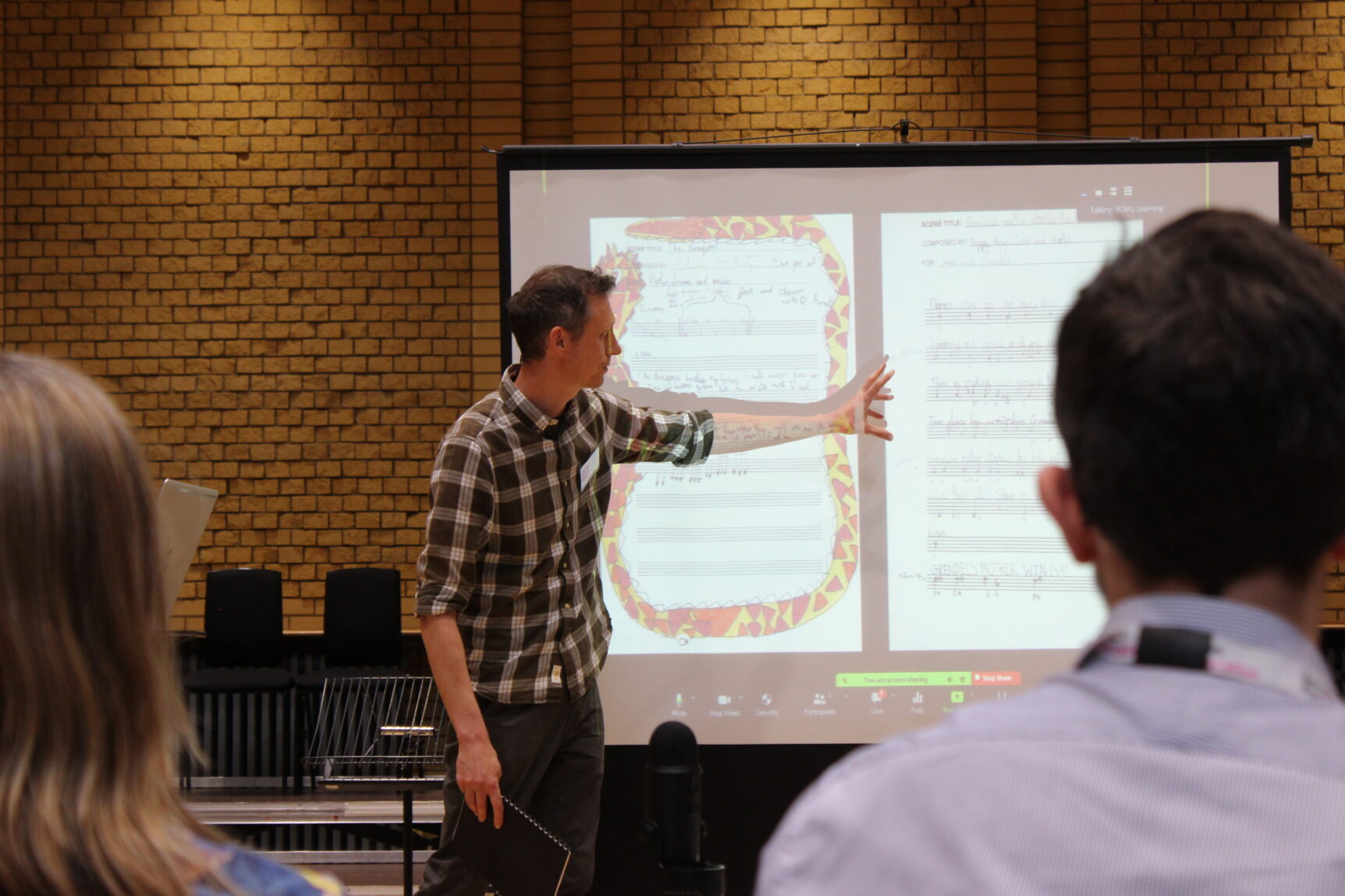On the 30th June we attended the Listen Imagine Compose Primary Seminar 6 at the CBSO Centre.
The event celebrated the achievements and potential of music education for children. Talks, discussions and workshops provided insights into effective teaching practices, showcased diverse approaches to composition and emphasised the significance of empowering students to listen, imagine and compose their own music.
What is Listen Imagine Compose Primary?
Listen Imagine Compose Primary works with composers, educators and coordinators to explore how composition is taught in primary schools. It is a partnership project between Sound and Music, Birmingham Contemporary Music Group, Bristol Beacon and Services for Education, funded by the Paul Hamlyn Foundation.
Seminar 6 reflected on the recent months of delivery, celebrated children’s music and hosted discussions around access to music education within a primary setting.
What reflections were shared during the seminar?
The day started with a presentation by Bournville Village Primary showcasing a new work for viola create by students. Composition lessons provided toolkits of musical knowledge. Methods of notation (graphic scores, Western Staff Notation and words), harmony, melody and collaboration were all explored by the young composers.
Will Frampton shared his reflections on working with Wallscourt Farm Academy. Music technology and graphic notation were used to engage Year 5 learners. Modular synthesiser allowed the young composers to explore sound vibrations and wave forms. These explorative exercises brought musical concepts to life in tangible and engaging ways. Practical delivery contextualised the meanings of words such as timbre, register, structure, and pitch, allowing learners to develop personal understandings of musical elements.
Gemma Adan used her own compositions as a starting point with students, setting a collaborative tone to lessons. TikTok was used as a familiar gateway for young composers, inviting them to write composition in response to Open Verse challenges and using songs they knew to inspire new works. Learners were encouraged to embrace languages spoken at home and within their communities as Gemma Adan does within her compositional practice. As a result, the students developed personal perspectives and confidence with music-making.
KALA CHNG took on a conceptual approach with students, inviting them to do something they loved before composing, and then, when inspiration struck, to “catch their songs from the air”. Manifestation removed pressure and allowed the young composers to “find” their compositions naturally. The results were a thrilling variety of new works created collaboratively, exploring a wide range of subject matter. Teachers reflected on how the transferable skills developed within KALA’s music lessons impacted other areas of the curriculum. For example, editing songs and crafting lyrics gave students confidence with essay writing for other subjects.
Robert Crehan used graphic scores and grids to share musical information with the young composers. Themes were generated to set guidelines for their compositions. These easy entry points created a structure within which creativity could blossom freely. The compositions created were unique, covering topics from hot chocolate to difficult emotions. Music-making became a new method of communication for the young composers.
Richard Barnard co-created a retelling of the Beowulf story through opera with young composers. Richard took a classical approach to music education using the likes of Western Staff Notation as tools for students to create an ambitious new work. Students were learning the story of Beowulf in their English lessons and Anglo-Saxon England in History, making the theme a natural starting point for their compositions. This cross-subject approach creating an immersive learning experience throughout their school day and gave the students confidence entering the composition stage with their base of knowledge. Richard’s belief in the students to achieve without boundaries allowed them to create something truly spectacular.
Chloe Knibbs shared the creative process introduced to students at Tiverton Academy. Lessons began by developing a base knowledge of Western Staff Notation, building on this with creative activities such as alphabet dice to generate melodies. Learners were able to collaborate with an oboist. Seeing their compositions performed by a professional musician built their confidence and allowed them to understand how their written compositions could translate to performance.
Michael Betteridge used works already known by the young composers such as ‘The British’ by Benjamin Zephaniah, creating a cross-curriculum approach to composition. Michael reflected on both the musical development in the students, and the social skills developed through collaborative music-making. By introducing examples of communication through the arts, the learners were able to use music as a method to speak to one another.
Professor Martin Faultey wrapped up the presentations with an inspiring reflection on the impact of Listen Imagine Compose Primary. This developed into a discussion space where teachers and composers alike shared their hopes for the future, the challenges faced and celebrated children’s music.
What are the key takeaways from the event?
Empowering students
By providing students with the tools, guidance and opportunities to explore music creatively, we can nurture their musical abilities and develop confidence with composition.
Reflective teaching
Teachers highlighted the need for cohesive formatting, detailed lesson plans and the utilisation of toolkits to make teaching music accessible to those who don’t have subject specific expertise. By continuously refining their teaching methods, educators can provide support throughout their school to ensure a rewarding learning experience for both teachers and students.
Diverse approaches to music education
The presentations showcased a variety of approaches to music education, including graphic notation, music technology and exploring sound vibrations. By embracing different teaching methods and techniques, educators can cater to individual students needs and foster their creativity.
Supporting children’s musical development
The discussions revealed that some children require additional support. Pitch comprehension and notation were identified as potential areas of challenge. The composers’ creative approaches to delivery provided opportunities for students to experiment with sound and develop understandings of musical elements through play, collaboration and practical delivery. The removal of academic pressure created a safe and supportive environment for students to grow their ideas and develop their musical skills. The transferable skills developed carried over into other subjects, proving the benefit of music education within school settings.


